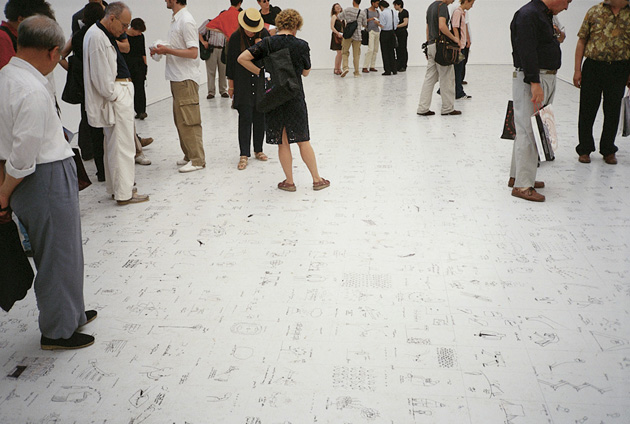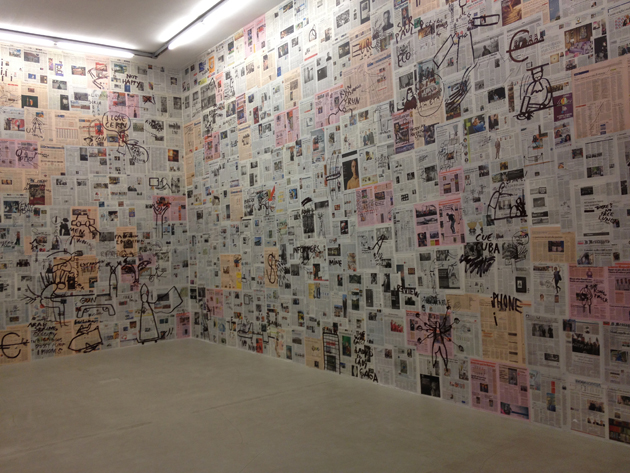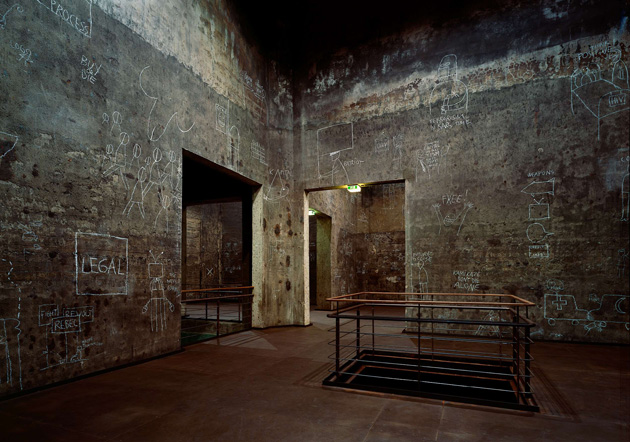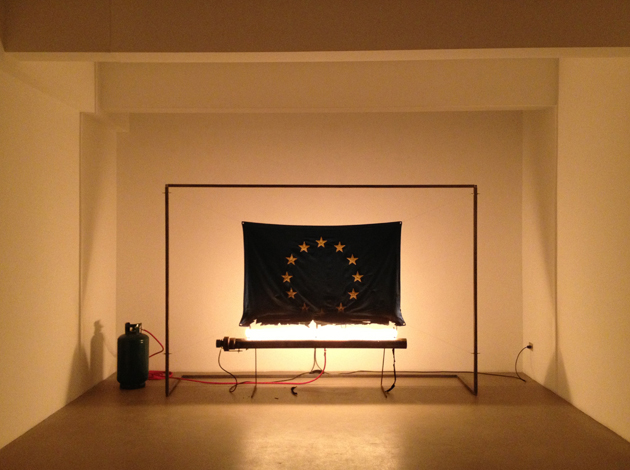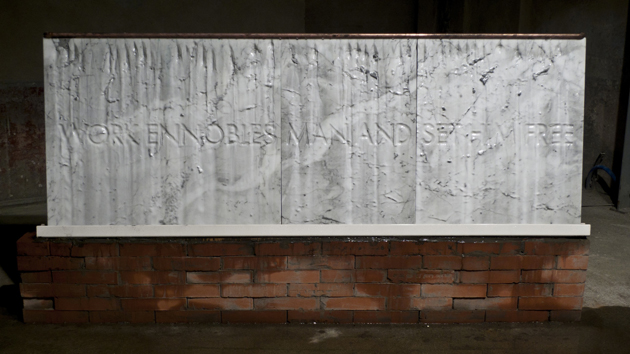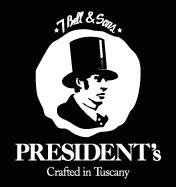Artissima Part 1. Strolling Around The Streets
Just arrived in Torino, and before going to visit and report from the fair, we opted for discovering the streets and monuments profiting by the numerous events arranged by Artissima in collaboration with institutions, scattered around the regal city.
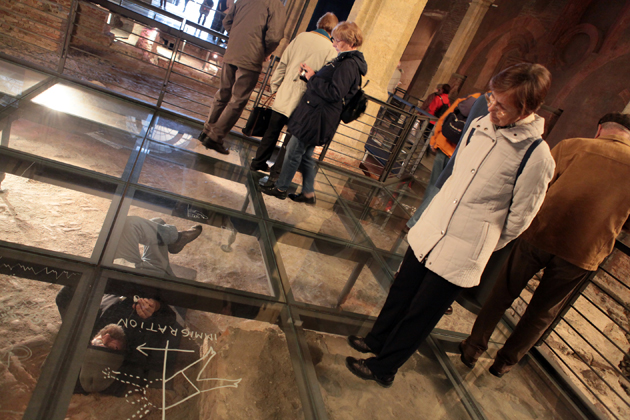
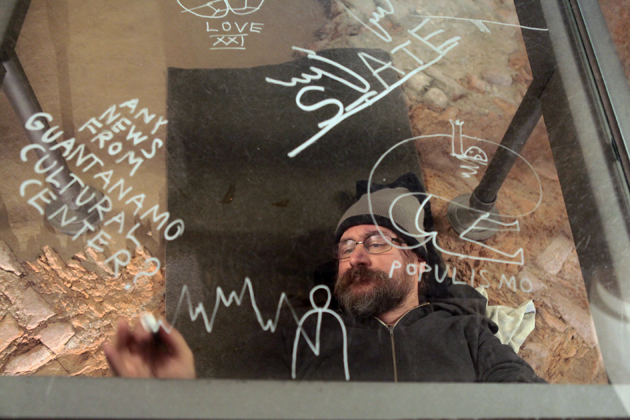
The first stage, after tasting the typical, irresistible sweet chestnuts while walking along the river Po turning towards the centre, is Palazzo Madama, venue of the Museum of Ancient Art, where we meet again Dan Perjovschi – it was less than two months ago when we first encountered and were affected by the incisive work by the Romanian artist. Ruin – Politics is the title of his latest show strongly influenced by the see-through floor structure, which opens the view over the remains of the Roman age. Once again Perjovschi’s drawings, which remind “cartoonish” images connoted by simplified marks and accompanied by sharp and ironic short texts, analyze social issues, from the global to the more local ones, and interpret conflicts, paradoxes and hopes of contemporary human beings. Crawling under the visitors’ feet, the artist performed his site-specific work, using the ruins as the background of a message that needs people to take it up. “Who did these foolish vignettes?” says a lady while entering the room. At first blush and without stopping at least for an instant to look at them, they could seem ordinary or even stupid sketches, but a small effort turns them into penetrating works, endowed with an amazing ability to synthesize, able to translate the complexity of our world into easy and ironic situations that make reflect.
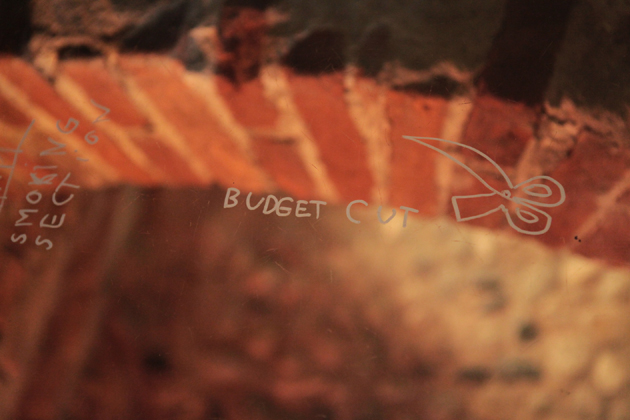
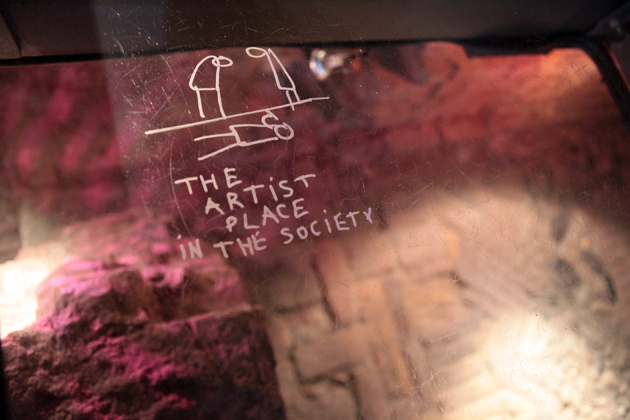
From Palazzo Madama to Fondazione Sandretto Re Rebaudengo – after going around the city, taking wrong trams that lead us to wrong directions and getting lost twice in the pouring rain. Note: next time remember the map! – to see the exhibition by Ragnar Kjartansson, The End – Venezia. 114 canvases set up in a picture gallery that covers almost all the walls of the room from the ceiling to the floor. The protagonist is a sort of contemporary romantic hero, a pose, a modern Bohémien conceived for the 53rd Biennale of Venice and played by Kjartansson’s friend and fellow artist Páll Haukur Björnsson. Living the studio as both a rocker and a lagoon mermaid, who spends his time smoking cigarettes and drinking beer, dressed only in a micro Speedo swimsuit, he expresses all his loneliness and decadence conveying and emphasizing the cliché around the figure of the artist. The same subject repeated by Kjartansson in an obsessive way brings you back to the melancholic atmosphere of the studio where the canvases were painted and where the performance took place in 2009.
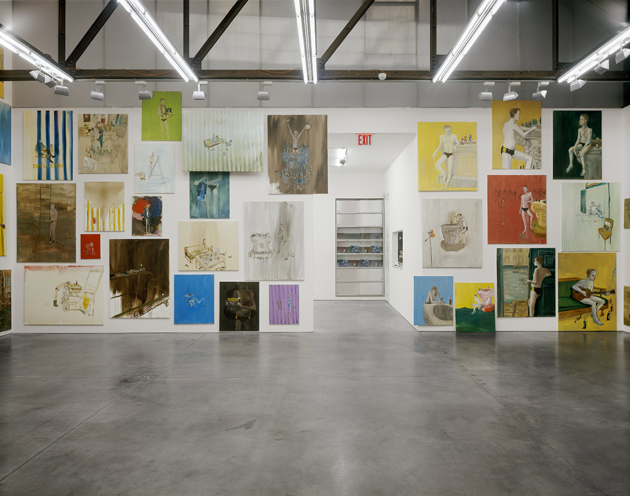
Before leaving the museum we cannot avoid taking a look at the show For President, curated by Mario Calabresi and Francesco Bonami, that delves into the spectacular world of American propaganda. Presenting gadgets, photographs shot by both professionals and the anonymous during the speeches of white house wannabes, but also video and installations, which retrace the history of USA presidential elections from the early beginning.
The first part of our report from Artissima is almost finished. We drop in at Cripta 747 to see the project Where is Your God now? by Kianoosh Motallebi, in the midway between art and science, and just before starving we move to Da Michele, a renowned restaurant in the city centre where art spectators lose their aplomb to turn into noisy, carefree wine lovers. Cheers!
Monica Lombardi